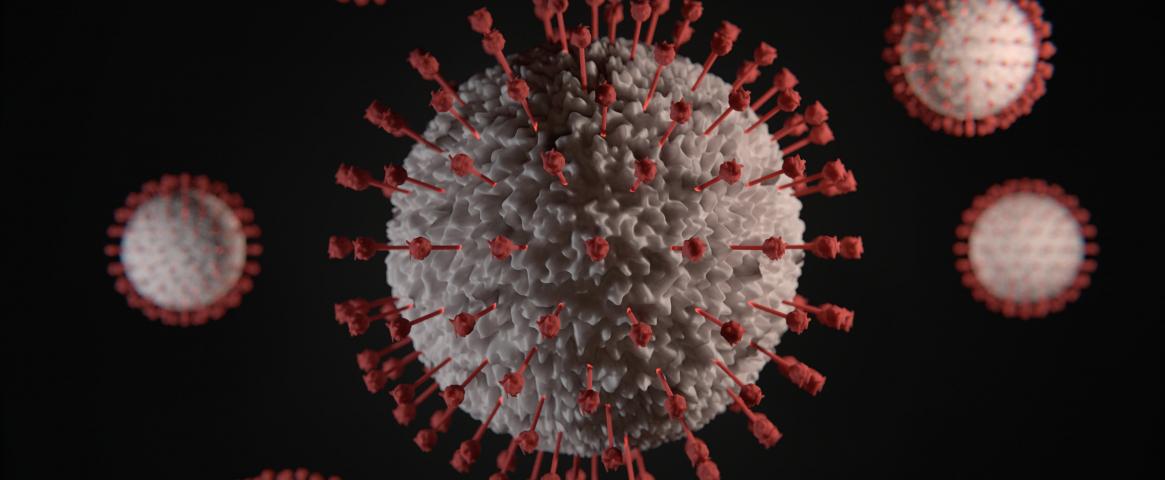By Katherine Lester
Scientists are looking to plant viruses for clues into how SARS-CoV-2 mutates.
Plant pathologists from the University of Nebraska-Lincoln (UNL) found that the COVID-19-causing coronavirus, SARS-CoV-2, followed mutational patterns similar to its related betacoronaviruses. The computational study, published in the Journal of Virology, showed that variation largely occurs in the S glycoprotein, also known as the spike protein, of the virus. A better understanding of how the spike protein may mutate could help scientists develop strategies against new virus variants that the immune system may have trouble recognizing.
Hernan Garcia-Ruiz, an associate professor of virology at UNL, said his group began the study in March 2020 by asking the same questions they ask when studying plant viruses: Will the virus change, helping the virus overcome plant immunity? Could SARS-CoV-2 overcome the immune system or the vaccines?
“We knew how to answer those questions for plant viruses, so we chose to implement our protocols to analyze coronaviruses,” said Garcia-Ruiz. “They gave us a very predictable pattern for COVID-19 and related viruses.”
Katherine LaTourrette, one of Garcia-Ruiz’s doctoral students, applied her expertise in computational biology to analyze the genetic mutation patterns of the betacoronaviruses.
“Animal immunologists are interested in the biochemistry, but coming from plants, where there’s more unknowns, you take a different approach of trying to see general patterns,” said LaTourrette. “You try to look for things that you can generalize better.”
The general pattern? The spike protein is more variable than the rest of the viral genome. The spike protein represented 17% of the genome but accumulated at least 50% of the mutations, according to the study.
Why do these mutations occur?
Random mutations occur as a virus spreads from host to host. Whether moving from a bat to a human or from one continent to another, the virus meets new genetically diverse hosts that it needs to adapt to so it can spread successfully.
“When you put the virus into a new host, it’s going to have to try and figure out how to adjust to that new environment and is going to make different mutations,” said LaTourrette.
Some of those mutations will be unsuccessful and die off quickly. Others could be much better at their job.
LaTourrette said that the greater number of hosts means increased opportunities for mutation for a “lottery variant” to pop up. A lottery variant could be more transmissible, more infectious, and more harmful to humans -- but a better virus.
At the time of the study, new highly transmissible variants such as the delta variant had not yet appeared. Even so, some geographic strains such as the UK and Brazil strains already showed increased variation at the S glycoprotein.
The researchers predicted that variants could arise. Early in the pandemic, the first viral genome sequences available to researchers showed relatively few differences, suggesting that SARS-CoV-2 would not mutate rapidly.
“One of the predictions from the study was very simple -- variants are going to show up. So, when we got the reviews, our paper was criticized, essentially saying there is no biological evidence [for the variants],” said Garcia-Ruiz. “Within a few months, we had variants.”
Vaccines based on spike protein
The SARS-CoV-2 vaccines trigger the immune system to create antibodies based on the spike protein sequence. The same sequence is used in spike protein antibody tests. If the spike protein mutates beyond recognition of these tests, the tests become obsolete and people might need a booster shot, the researchers said. However, they emphasized that the vaccine is still effective and improves outcomes compared to those who are unvaccinated.
Garcia-Ruiz said another strategy for vaccine formation could have been to target part of the virus not as susceptible to mutation. However, targeting a stable region of the virus would provide additional challenges. The outer shell of a virus, such as the spike protein, is more accessible for antibodies to recognize than a stable inner region.
Based on the vaccines available, the goal is to continue vaccinations and limit the number of infections so the chance of a “lottery variant” decreases, LaTourrette said.
The researchers were pleased that their expertise in plant viruses applied to human viruses as well.
“Some virologists study mice, some study plants, but at the core we’re just identical virologists,” said LaTourrette.
Katherine Lester is a junior biology and journalism major on the pre-health track at Texas Christian University. She is a Chancellor’s Scholar and president of the Students Acting for Gender Equity organization. She works as a line editor and contributor for her school’s independent online student publication, TCU360. Her interests include medical journalism and health disparities. Follow her on Twitter @katherinelest3r or email her at k.j.lester@tcu.edu. You can find her work at https://spark.adobe.com/page/vj18cJMNdlK1e/.
This story was produced as part of NASW's David Perlman Summer Mentoring Program, which was launched in 2020 by our Education Committee. Lester was mentored by Steven Ira Benowitz.
Photo by Viktor Forgacs on Unsplash

